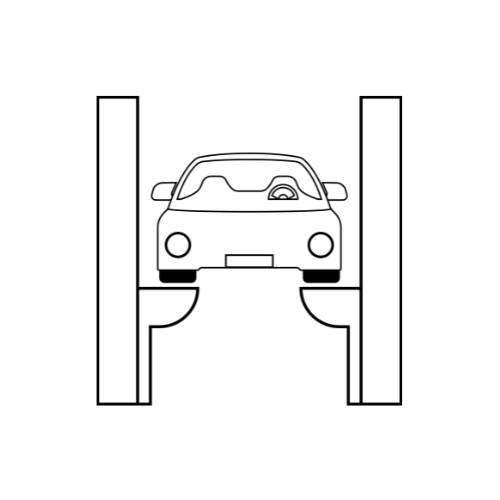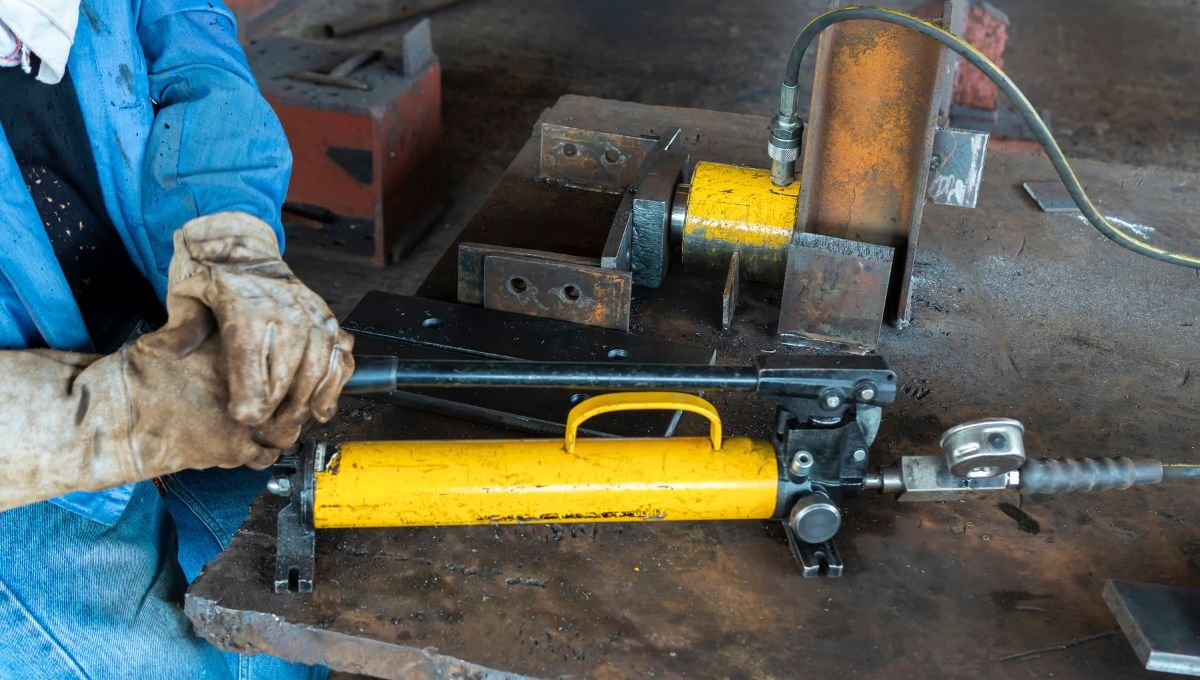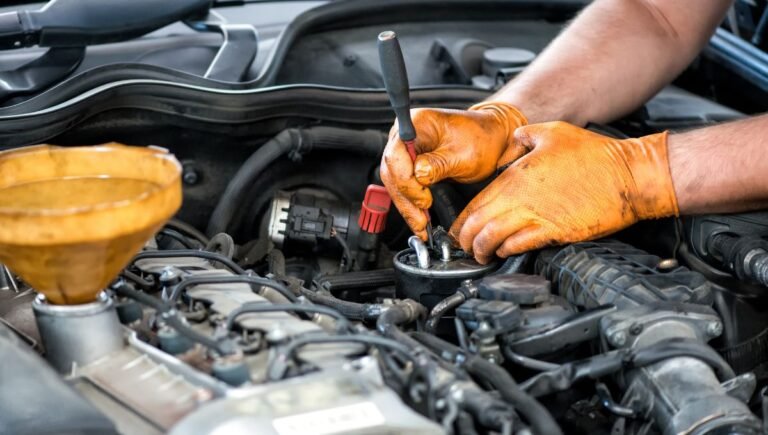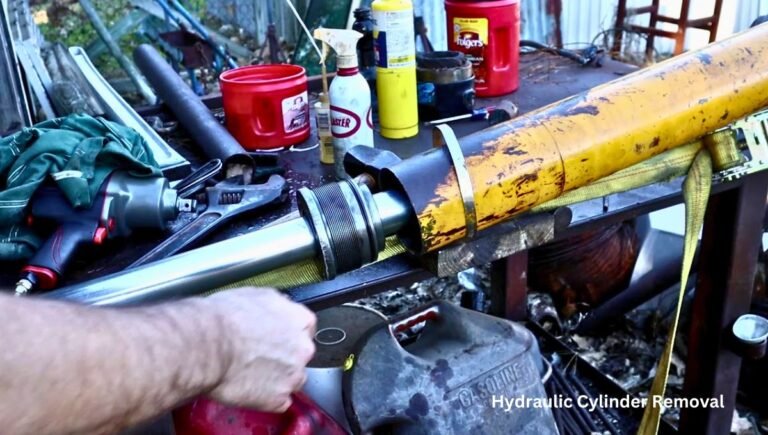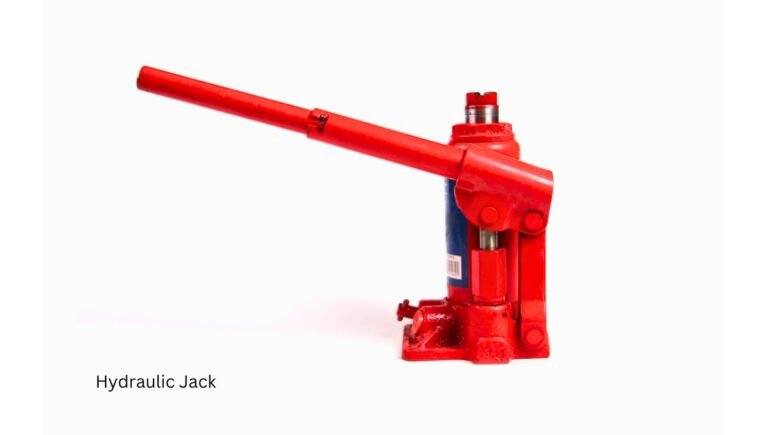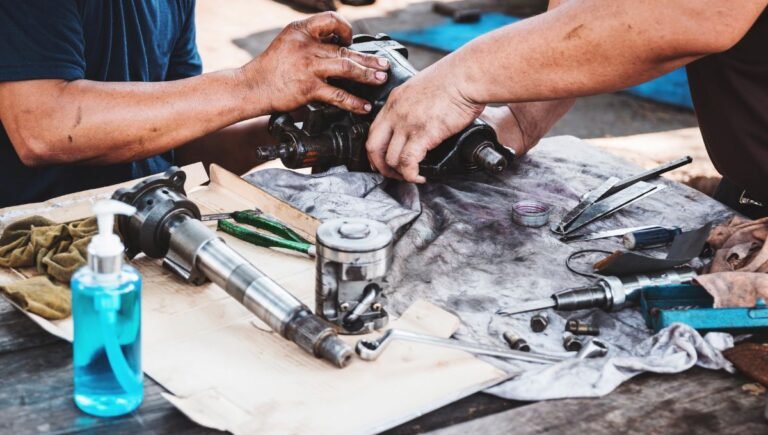How To Manually Retract Hydraulic Jacks? Quick Tips
To manually retract hydraulic jacks, release the pressure valve and gently push the jack down. Ensure the hydraulic fluid level is adequate.
Hydraulic jacks are essential tools for lifting heavy loads. Sometimes, you may need to retract them manually. Understanding the process ensures safe and efficient operation. Begin by locating the pressure release valve, usually near the base. Turning this valve counterclockwise will release the hydraulic pressure.
Gently push the jack downward to retract it fully. Regularly check the hydraulic fluid level to maintain optimal performance. This simple yet crucial maintenance task keeps your hydraulic jacks in top condition, ensuring they are always ready for the next heavy-lifting job. Proper care and attention extend the lifespan of these indispensable tools.
Introduction To Manual Retraction Of Hydraulic Jacks
Hydraulic jacks are common tools in many garages and workshops. They lift heavy objects with ease. Sometimes, these jacks need manual retraction. Knowing how to do this ensures safety and efficiency.
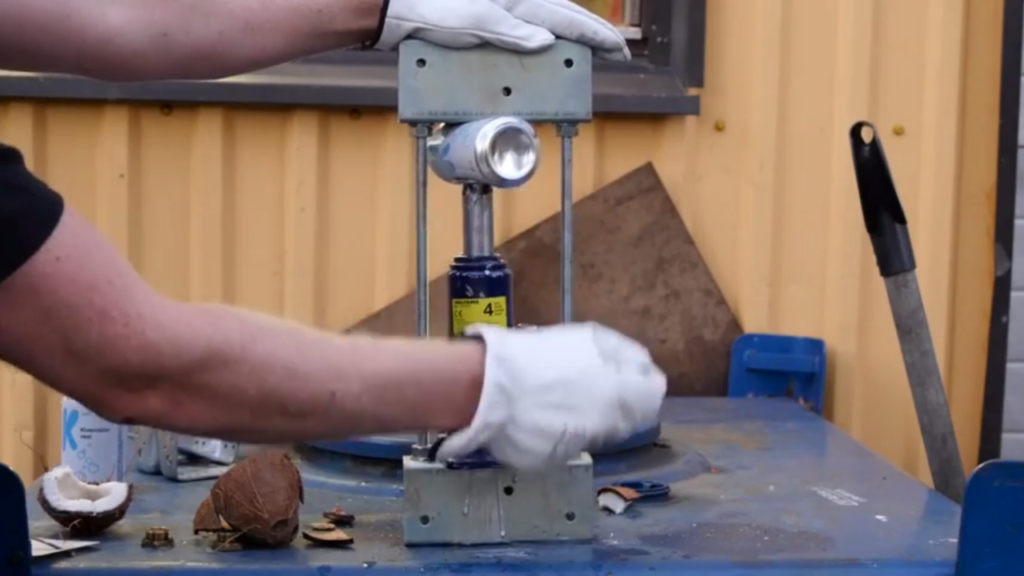
The Basics Of Hydraulic Jack Operation
Hydraulic jacks use fluid pressure to lift weights. The main parts are a pump, cylinder, and valve. The pump moves fluid into the cylinder, creating pressure. This pressure lifts the load.
| Component | Function |
|---|---|
| Pump | Moves fluid |
| Cylinder | Holds fluid and pressure |
| Valve | Controls fluid flow |
Situations Requiring Manual Retraction
Manual retraction is needed in specific cases. Sometimes, the jack’s automatic system fails. This can be due to a fluid leak or mechanical issue. Other times, the load needs to be lowered slowly and carefully.
- Fluid leaks
- Mechanical failure
- Controlled load lowering
Retracting a hydraulic jack manually ensures safety. Always follow proper steps to avoid accidents.
Safety First: Precautions Before Starting
Before you manually retract hydraulic jacks, always focus on safety. This ensures you avoid injuries and accidents. Follow these simple steps to keep yourself safe.
Personal Protective Equipment
Always wear the right gear. This includes:
- Gloves to protect your hands.
- Safety glasses to shield your eyes.
- Steel-toe boots to guard your feet.
- Hard hats if working under vehicles or heavy equipment.
Check your gear before starting. Make sure it fits well and is in good condition.
Ensuring A Stable Work Environment
Your work area must be stable. Follow these steps to ensure safety:
- Ensure the ground is level and firm.
- Clear away any debris or obstacles.
- Use chocks to prevent movement of vehicles or equipment.
- Make sure your tools are within reach.
| Check | Action |
|---|---|
| Ground Level | Ensure it is even and firm. |
| Obstacles | Clear any debris or obstacles. |
| Chocks | Place them to prevent movement. |
| Tools | Keep them within easy reach. |
By following these steps, you create a safe working environment. Always prioritize safety to avoid accidents.
Tools And Materials Needed
Retracting hydraulic jacks manually requires specific tools. Using the right equipment ensures safety and efficiency. Below, you’ll find a list of essential tools and possible substitutes for specialized equipment.
List Of Essential Tools
- Hydraulic fluid: Ensures smooth operation of the jack.
- Wrenches: Various sizes for loosening and tightening bolts.
- Safety gloves: Protects your hands during the process.
- Protective eyewear: Shields your eyes from potential hazards.
- Manual pump: Used for retracting the jack if needed.
Substitutes For Specialized Equipment
Sometimes you might not have specialized tools. Here are some common substitutes:
- Adjustable wrench: Can replace various fixed-size wrenches.
- Motor oil: Can be used in place of hydraulic fluid temporarily.
- Thick cloth: Can substitute safety gloves for basic protection.
- Sunglasses: Can be an alternative to protective eyewear.
- Manual lever: Can replace a manual pump for retracting the jack.
Using the right tools is crucial. Substitutes should only be used temporarily. Always prioritize safety and efficiency.
Identifying Your Hydraulic Jack Type
Understanding how to manually retract hydraulic jacks begins with identifying your hydraulic jack type. Different jacks have different mechanisms. Knowing your jack type is crucial.
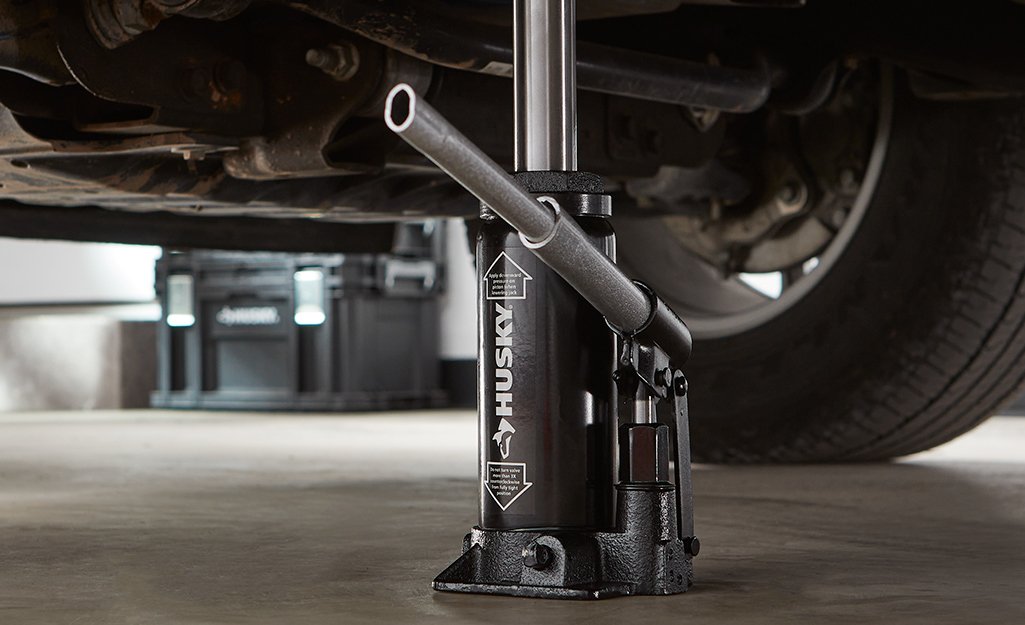
Bottle Jacks Vs. Floor Jacks
There are two main types of hydraulic jacks: bottle jacks and floor jacks. Each has its own features.
| Type | Features | Common Uses |
|---|---|---|
| Bottle Jacks |
|
|
| Floor Jacks |
|
|
Understanding Your Jack’s Retraction Mechanism
Each jack has a unique retraction mechanism. Bottle jacks usually have a release valve. Floor jacks often use a release knob or lever.
- Bottle Jacks: Locate the release valve. Turn it counterclockwise to lower the jack.
- Floor Jacks: Find the release knob or lever. Gently turn or pull it to retract the jack.
Always refer to your jack’s manual. It provides specific instructions. Safety first!
Step-by-step Guide To Manual Retraction
Manually retracting hydraulic jacks can seem daunting. This guide will help you do it safely and efficiently. Follow these simple steps to ensure a smooth process.
Releasing Pressure Safely
Before starting, ensure the hydraulic jack is on a level surface.
Release the pressure by turning the valve counterclockwise. This step helps avoid sudden movements and potential injuries.
Check the pressure gauge to confirm the release. The gauge should read zero before proceeding.
Engaging The Manual Retraction Process
With pressure released, locate the manual retraction lever. This lever is usually near the base of the jack.
Move the lever into the retraction position. This action engages the manual retraction mechanism.
Slowly pump the handle to retract the jack. Continue pumping until the jack is fully retracted.
Once retracted, secure the jack by tightening the valve clockwise. This step ensures the jack stays in place.
| Step | Action |
|---|---|
| 1 | Place jack on level surface |
| 2 | Release pressure by turning valve counterclockwise |
| 3 | Check pressure gauge reads zero |
| 4 | Locate manual retraction lever |
| 5 | Move lever to retraction position |
| 6 | Pump handle to retract jack |
| 7 | Tighten valve clockwise |
By following these steps, you can manually retract hydraulic jacks safely and effectively. Remember to always work carefully to avoid accidents.
Troubleshooting Common Issues
Manual retraction of hydraulic jacks can sometimes present challenges. It’s essential to identify and troubleshoot common issues quickly. This ensures the hydraulic jack operates efficiently and safely.
Dealing With Stuck Jacks
A jack may get stuck due to various reasons. Dirt or debris can clog the moving parts. Regular cleaning helps prevent this issue.
- Inspect the jack for visible dirt.
- Clean the moving parts with a brush.
- Lubricate the joints to ensure smooth movement.
If the jack remains stuck, check for bent components. Bent parts can hinder the retraction process. Replace any damaged parts immediately.
Addressing Hydraulic Fluid Leaks
Hydraulic fluid leaks can reduce the efficiency of the jack. Regularly inspect the jack for fluid leaks.
- Look for wet spots around the jack.
- Identify the source of the leak.
- Check hoses and seals for cracks or wear.
Replace any worn-out hoses or seals. Refill the hydraulic fluid to the recommended level. This ensures the jack operates smoothly.
| Problem | Solution |
|---|---|
| Stuck Jack | Clean, Lubricate, Replace bent parts |
| Hydraulic Fluid Leak | Inspect, Replace hoses/seals, Refill fluid |
Regular maintenance and inspection can prevent these common issues. Always ensure your hydraulic jack is in optimal condition before use.
Maintenance Tips To Avoid Future Problems
Maintaining your hydraulic jacks ensures they work efficiently. These tips will help you avoid future problems. Regular care keeps your equipment in top shape.
Regular Cleaning And Inspection
Clean your hydraulic jacks after each use. Remove dirt and debris. This prevents clogging and ensures smooth operation.
Inspect the jacks for signs of wear and tear. Look for cracks, rust, or oil leaks. Replace damaged parts immediately. This keeps the jacks safe and reliable.
Use a soft cloth to clean the jacks. Avoid harsh chemicals. They can damage the hydraulic system. Lubricate moving parts regularly. This reduces friction and prolongs the life of the jacks.
Hydraulic Fluid Management
Check the hydraulic fluid level often. Low fluid can cause malfunction. Use the recommended fluid type. This ensures compatibility with the system.
Change the hydraulic fluid as needed. Contaminated fluid can harm the system. Use a clean funnel when adding fluid. This prevents dirt from entering the reservoir.
Monitor the fluid color and consistency. Dark or cloudy fluid indicates contamination. Replace it immediately to avoid damage.
Store hydraulic fluid in a clean, dry place. Keep it sealed to avoid contamination. Proper storage extends the fluid’s shelf life.
| Task | Frequency |
|---|---|
| Clean jacks | After each use |
| Inspect for damage | Weekly |
| Check fluid level | Monthly |
| Change hydraulic fluid | As needed |
Following these tips helps maintain hydraulic jacks. This ensures they work efficiently and last longer.
Professional Help: When To Call In The Experts
Manually retracting hydraulic jacks can be complex. Sometimes, calling experts is best. This ensures safety and proper functioning. Learn when to seek professional help.
Assessing The Need For Professional Assistance
Not every issue with hydraulic jacks needs an expert. But some signs do. Watch out for these:
- Leaks: Fluid leaking is a serious problem.
- Unusual Noises: Strange sounds mean internal issues.
- Slow Retraction: Slow movement indicates a problem.
- Complete Failure: If the jack won’t retract, call a pro.
If you notice these issues, don’t risk it. Call an expert. They have the tools and knowledge to fix it safely. Trying to fix it yourself can make things worse.
Finding A Reputable Hydraulic Repair Service
Choosing the right service is important. Follow these steps to find a good one:
- Research: Look up local services online.
- Read Reviews: Check customer reviews and ratings.
- Ask for Quotes: Get price estimates from several services.
- Verify Credentials: Ensure they have the right certifications.
- Check Experience: Choose a service with lots of experience.
Finding the right service ensures your hydraulic jacks are in good hands. This saves you time, money, and stress.
| Step | Action |
|---|---|
| 1 | Research local services online. |
| 2 | Check reviews and ratings. |
| 3 | Get price estimates. |
| 4 | Verify their credentials. |
| 5 | Check their experience. |
By following these steps, you can find a reliable hydraulic repair service. This ensures your equipment is fixed properly and safely.
Ensuring Longevity Of Your Hydraulic Jacks
Maintaining hydraulic jacks is crucial for their long-term use. Proper care ensures they work when needed. This guide helps in manual retraction. Follow these steps to keep your jacks in top condition.

Recap Of Manual Retraction Best Practices
- Check for leaks before using the jack.
- Ensure the jack is on a flat, stable surface.
- Use the correct tools to retract the jack slowly.
- Always wear safety gear during the process.
- Store the jack in a dry, clean place.
The Importance Of Routine Maintenance
Routine maintenance keeps your hydraulic jacks in good shape. Follow these tips to extend their life:
- Inspect jacks for any signs of wear or damage.
- Lubricate moving parts regularly.
- Replace any worn-out seals promptly.
- Keep the hydraulic fluid clean and at the right level.
- Store jacks in a cool, dry place to prevent rust.
Below is a table summarizing key maintenance tasks:
| Maintenance Task | Frequency |
|---|---|
| Inspect for leaks | Before each use |
| Lubricate moving parts | Monthly |
| Check hydraulic fluid | Quarterly |
| Store properly | After each use |
Follow these steps to ensure your hydraulic jacks last longer and work efficiently when needed.
How Do You Manually Retract Hydraulic Jacks?
To manually retract hydraulic jacks, start by releasing the pressure valve. Then, use a suitable tool to retract the jack slowly. Ensure safety precautions.
Why Won’t My Hydraulic Jack Retract?
If your hydraulic jack won’t retract, check for blockages or leaks. Low hydraulic fluid levels or faulty valves can also be the issue.
Can You Retract Hydraulic Jacks Without Power?
Yes, you can retract hydraulic jacks without power. Use the manual release valve and apply force gradually. Follow safety instructions.
What Tools Are Needed To Retract Hydraulic Jacks Manually?
To manually retract hydraulic jacks, you need a wrench, hydraulic fluid, and a clean cloth. Always follow the manufacturer’s guidelines.
Conclusion
Mastering the manual retraction of hydraulic jacks ensures safety and efficiency. Follow our guide to avoid common mistakes. Practice these steps to prolong your equipment’s lifespan. Regular maintenance and proper handling are crucial. Keep this knowledge handy for future reference.
Stay informed, stay safe, and keep your hydraulic systems in top shape.
